The goTenna is thin, sleek, and lightweight device designed to circumvent our dependence on the grid for communication in times when there is no signal. Spawning out of Brooklyn, New York, this is the an extremely cool sliver of tech that benefits not just the survivalists and outdoor enthusiasts amongst us, but really, society at large, by offering us all an option where once there was none.
This potentially revolutionary device spawned out of the need that became obvious during the crisis of Hurricane Katrina and the difficulty survivors had in reaching out and checking in on loved ones. A lot of the wider goals of goTenna depends on mass adoption (citizen-driven crisis responses tend not to have unified communication protocols), but regardless of its wider social implications, it is a very cool tool that actually works out of the box, and offers smaller groups an excellent, working option for private communication without any extra charges and with only a cell phone necessary.
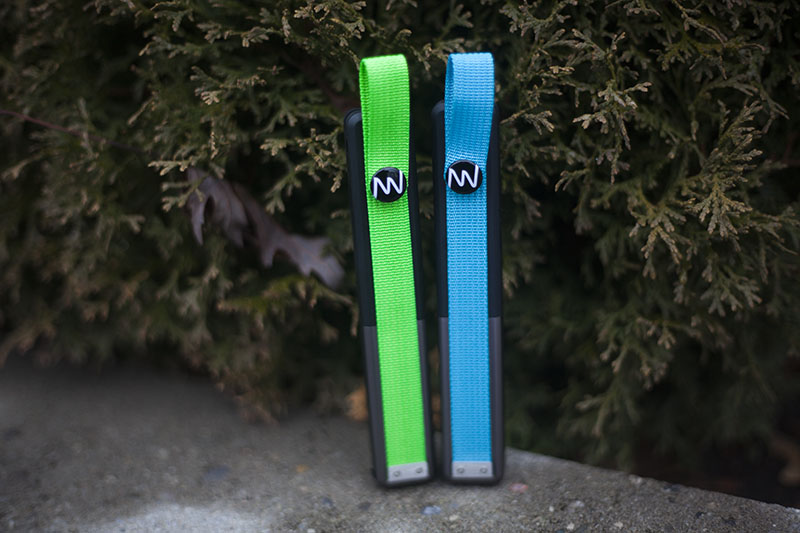 goTenna Off-Grid Communication Device for Cell Phones – Amazon / eBay
goTenna Off-Grid Communication Device for Cell Phones – Amazon / eBay
Out of the box, you get two lightweight (1.8 ounces/52 g) nylon and aluminium sticks, similar to those over-sized “wifi” sticks your local cell phone provider may provide. It’s small enough that you can carry it pretty much anywhere, and as per the advertising it’s designed with ruggedness in mind. The listed dimensions are 5.8 inches x 1 inch x 0.5 inch, which is pretty remarkable considering this packs in enough oomph to power communications up to 4 miles in radius (in the outdoors) for up to 24 hours of continuous use. Mighty impressive.
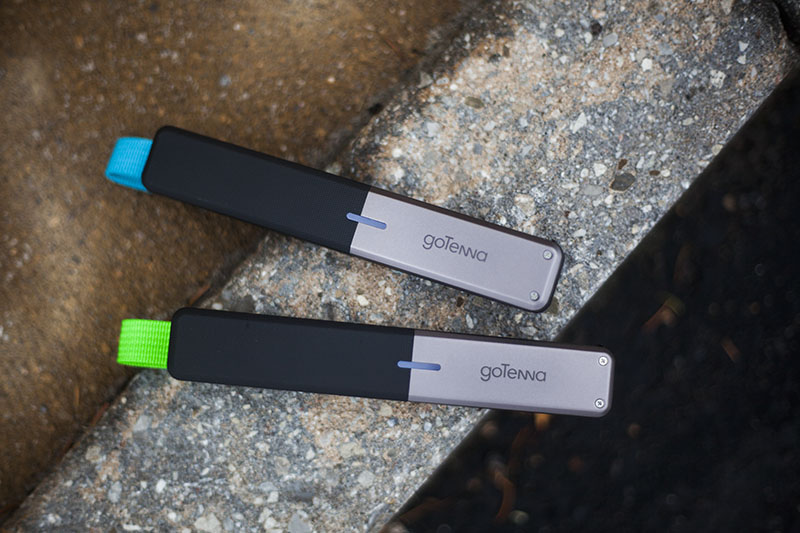
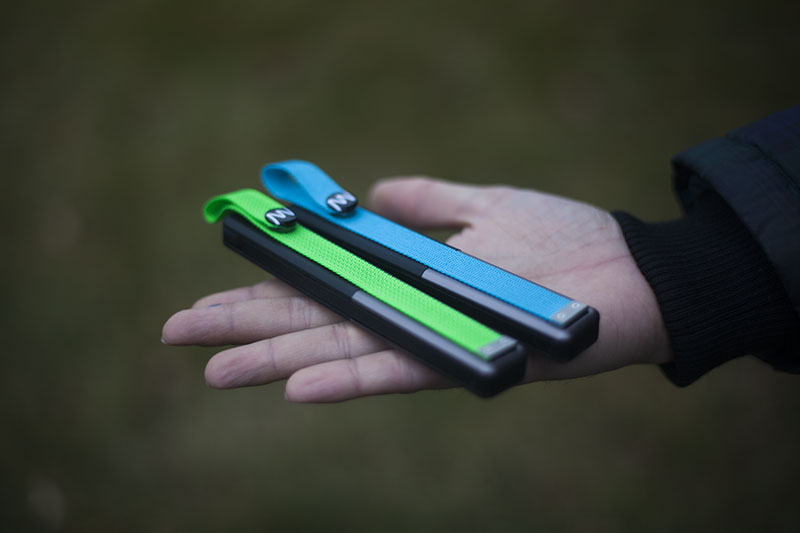
The goTenna hooks up to your smartphone (any modern Android or iPhone will do) using Bluetooth and has a built-in (non-replaceable) battery that is charged using micro-USB. The port is hidden away with a weatherproofed door.
In terms of aesthetics, the goTenna is nicely conceived, but beyond my initial impressions of its sturdiness, I don’t have much to add. I didn’t torture test the device, but I see no reason to doubt its durability – no inherent weak points cropped up beyond my initial worry over the slide out antenna (more on this later), but it’s obvious that a lot of time was spent refining this product to what is now most assuredly a good-looking, well-streamlined finished product.
I mention this because I am a bit of a Kickstarter addict (yes, I am that guy who buys 3D printing pens & Bluetooth buttons months in advance of their production date), and often the end result falls short of what is promised in terms of finish and usability. This is most definitely not a beta or first iteration – If the branding said Garmin I wouldn’t be surprised, as this slab of tech unabashedly delivers on all fronts with no issues or even quirks. Kudos to goTenna for that.
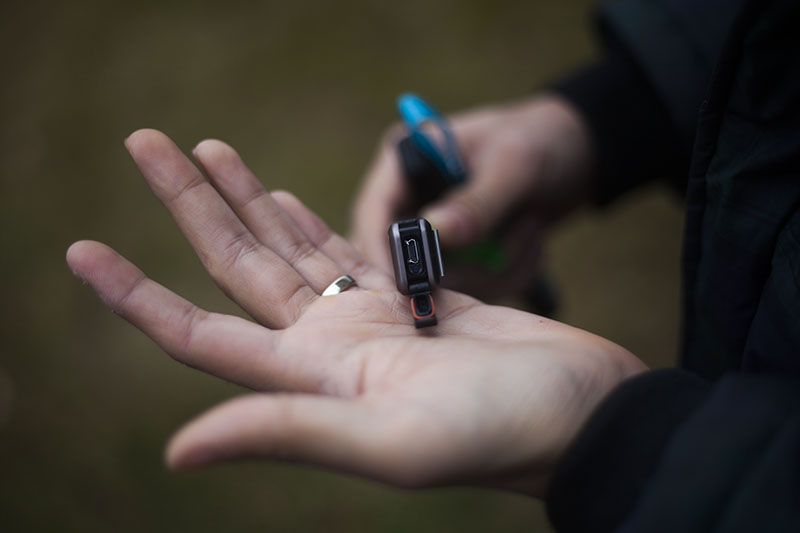
My only worry about the hardware side of things was when I deployed the antenna. It’s a plastic stick that slides out and locks into place with a reassuring click. Initially, I was concerned that doing this a few too many times might wear out the tracks or that I might cause unintended damage by twisting it too far one way, but I am happy to say – it’s solid.
When it comes to rugged survival gear, I dislike tools that are designed with a single mechanical point of failure. The goTenna is turned on by pulling the antenna out, and if the antenna breaks, the goTenna breaks. The (excellently detailed) goTenna FAQ mentions this, but the general caveat of “don’t be stupid” applies (as with all tech), and I see no reason to be concerned if you’re being careful. Materials are top notch and construction is weatherproof, water resistant (not waterproof – do not go swimming with it!), dust resistant, and for all intents and purposes, impact resistant as well.
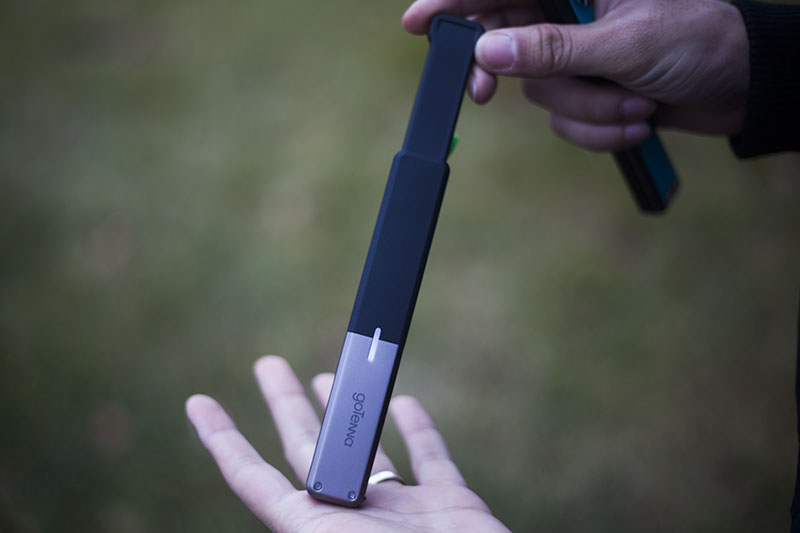
Not sure if it was designed as such, but the dimensions make the goTenna a perfect fit for M.O.L.L.E. webbing. Strapping the device onto my Condor E&E messenger bag was trivial and secure with the goTenna’s versatile strap.
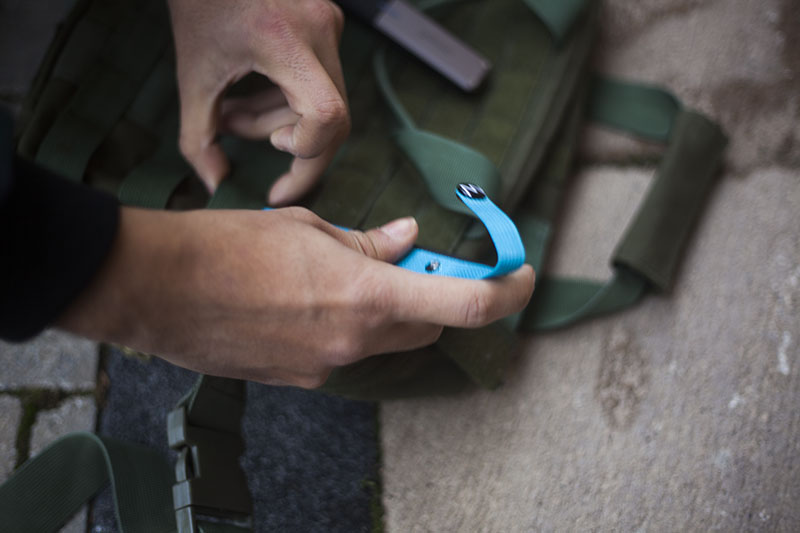 Condor Tactical E&E Escape and Evasion MOLLE Bag – Amazon
Condor Tactical E&E Escape and Evasion MOLLE Bag – Amazon
I feel all futuristic already! Have gotta say, it’s rare that I get all excited over testing gear these days, but this was a lot of fun.
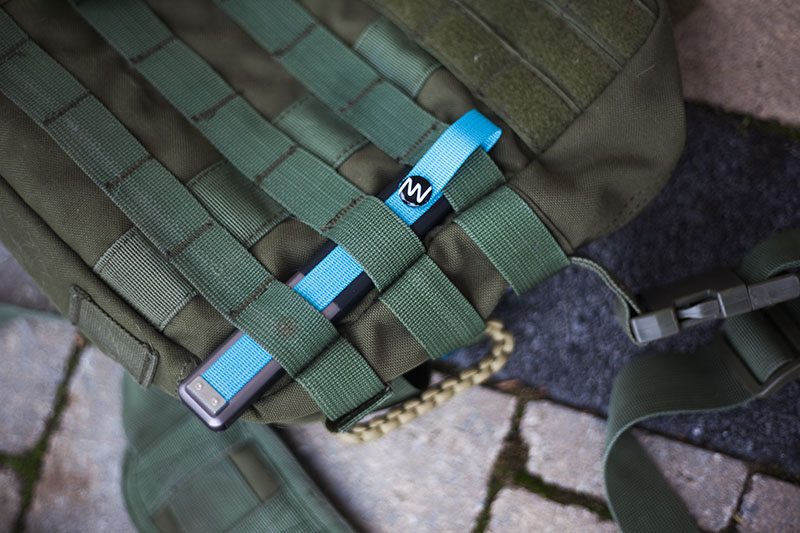
Now, in terms of getting the goTennas to work with your phone, it’s safe to say that it’s pretty damn easy to do, and you should have no problems with the process if you’re already using a smartphone.
The first step is to connect the two goTennas to two cellphones. Installation is absolutely trivial, just download app, install, launch, and then follow the simple instructions. Everything connected super smoothly for me with absolutely no hiccups whatsoever. It was an absolute pleasure to play around with a gadget that’s so unique without having to go through a convoluted installation procedure or troubleshoot every step through an inch thick manual. Hats off to you, goTenna team, now if only all tech was like this…
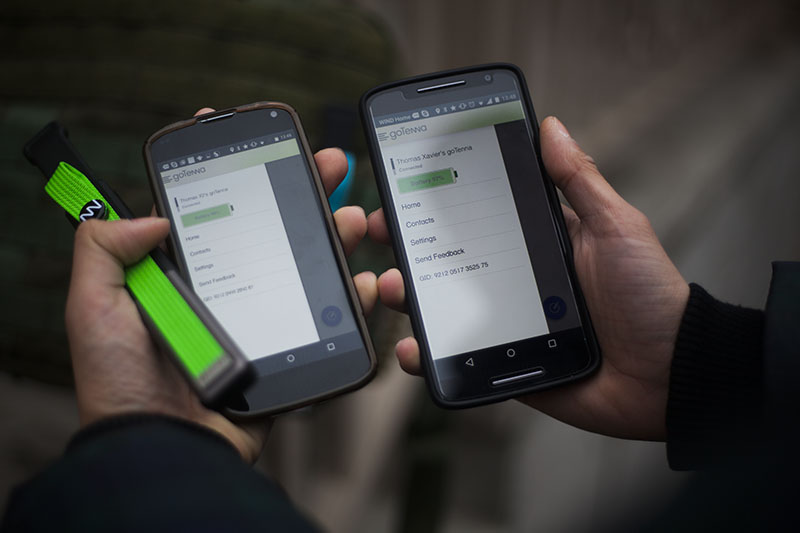
I wanted to test things out locally before I took the time to do this kind of thing in the wilderness. I started off testing by putting one of the phones in my mailbox and hung the paired up goTenna right underneath, then went for a walk.
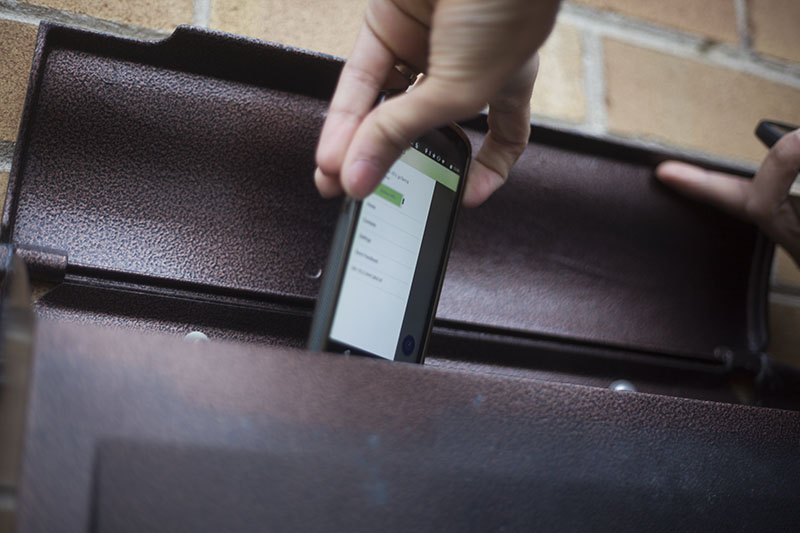
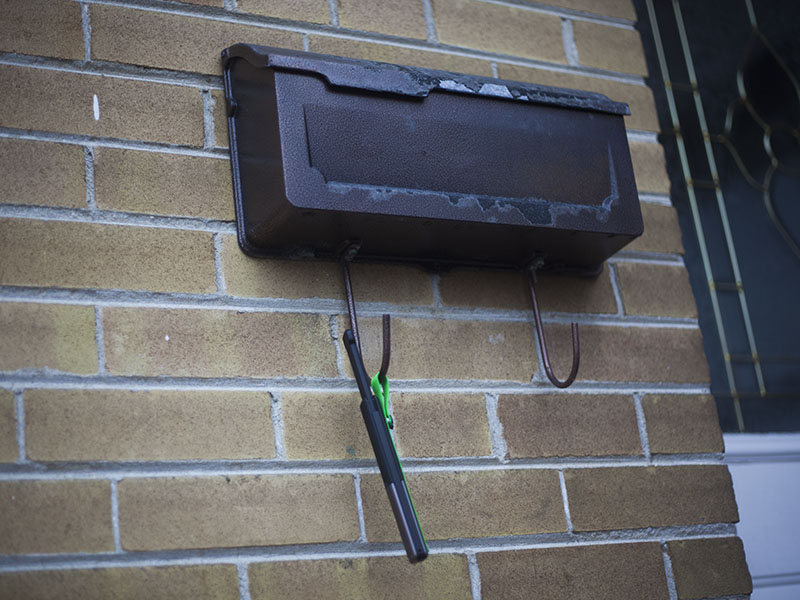
To connect to another goTenna user, you need either their phone number (not a fan of this – would prefer it not be an option so that only those who you give your code to can connect to you), or a randomly generated string of numbers (a GID) that can be changed whenever you want. I much prefer the GID, as I like the ability to reset my presence at will without needing to block people (an option that goTenna does offer within the app, so at the very least there’s that).
In practice, it works damn well. I went to add a contact, inputted the GID and honestly that’s it. Once that’s done, I could start texting away with the second phone immediately. No hangups or delays. No waiting. Fantastic.
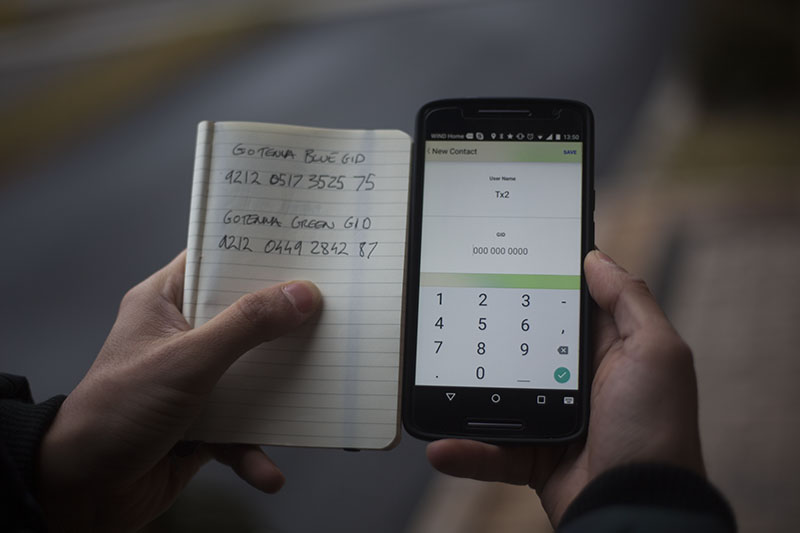
The inherent limitations that lie with deploying your own hardware means range and other points of failure will always be a worry. When it comes to sending a message (especially in a crisis) I really want to know if the recipient received this and thankfully goTenna does give you a visual cue (a green check mark) when the other device has received the message successfully. If the message hasn’t been received, you’ll see a red “!” to notify you. Very helpful, and in a lot of ways, it reminds me of WhatsApp, though it won’t tell you whether the message has been read, just whether it’s been received.
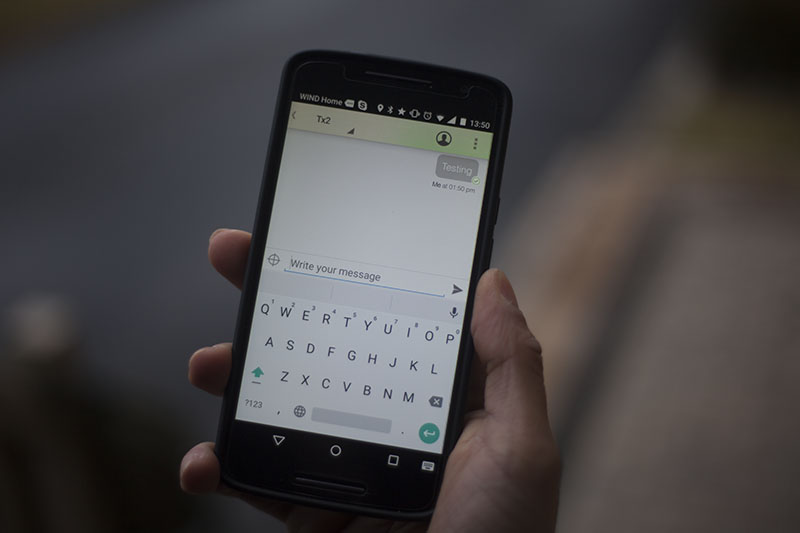
Just sending myself text messages back and forth between the two phones was seamless and very easy. When you think that all you need are two smartphones that have Bluetooth for this to work, it’s pretty mind blowing. Cell towers can crash and burn, the internet can go on strike, and yet even still, with this device, Elise would be able to remind me that I haven’t taken out the trash – alas, no more excuses.
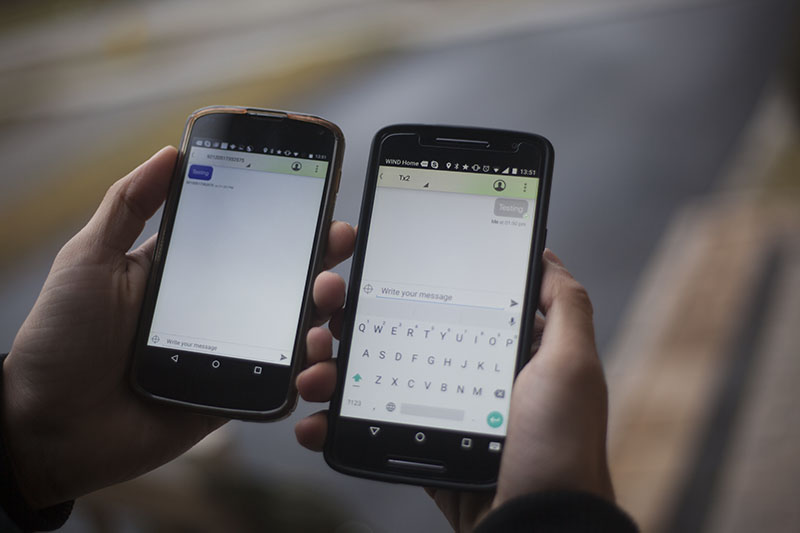
The biggest concern people tend to have with accessories like this is the inherent flaw of needing to carry two devices on you at all times. In my opinion, however, the goTenna is pretty unobtrusive, and since you only need your phone to be within 20 feet of the device, it’s not too bad to be carrying both devices (your phone and your goTenna) on you at all times. It’d be different if you had to have them side by side, but considering you can just strap it to a pack or someplace else that’s convenient and forget about it – no fuss from me here.
I actually forgot that the goTenna was attached to my pack, and as I write this review it’s still strapped onto my Condor E&E. The goTenna’s lightness and lack of presence (in a good way) means you will probably see no need to remove the goTenna.
I would never want to go hiking, put a device like this on a makeshift bench, and then forget when it comes time to make my way home. The fact that the goTenna is so lightweight and has that convenient strap makes it so that this is a really unlikely story. Chances are it’ll stay strapped onto your backpack until the next trip, even. And with a handy power bank in your bag, you technically don’t even have to bother removing the goTenna after every use to charge it.
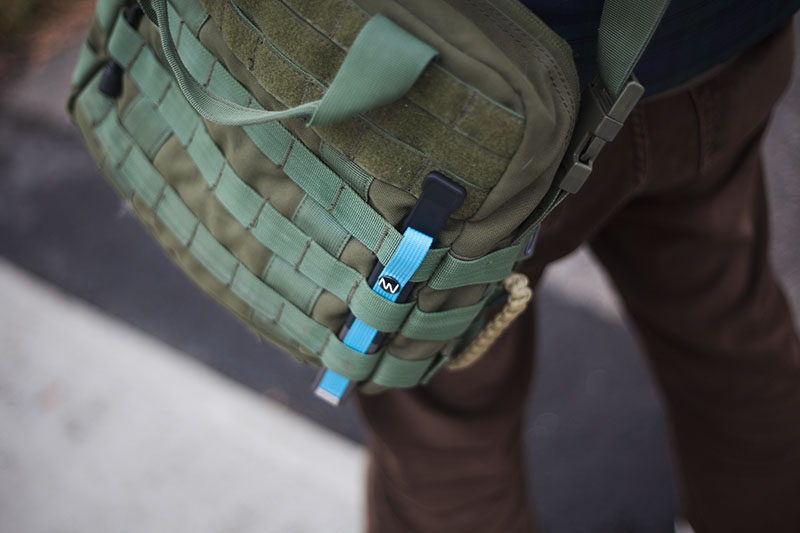
Besides the standard one on one messaging, you can also send your location, request another goTenna user’s location, and talk in a public channel to all other goTenna devices in the area. I bring this up because for preppers and survivalists, this provides a very interesting opportunity – you can easily create a system where a team that’s gotten separated bugging out can regroup and easily come to find each other again without needing anything besides your goTennas and your cellphones. Since you don’t automatically know another goTenna user’s location, and you have to request in order to receive it, it also benefits preppers and survivalists in that it never gives away information you don’t want given out. Feel the cell phone might be compromised and so don’t want to disclose your current location? You don’t have to meet the request for a GPS location. You can decline and only share your position when you want to.
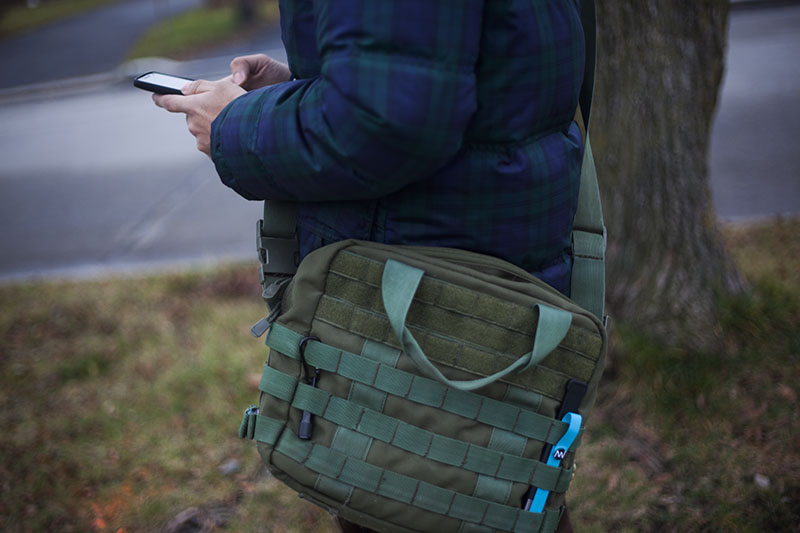
It should be noted that the public channel that goTenna calls “Shout” is obviously not private; one on one chat is fully encrypted using a 384-bit elliptic curve cypher, but it’s good to remember that any goTenna user can drop into the public channel (not the private one between you and your team) to eavesdrop. This is great to create a pseudo mesh network for situations like public dissent (Hong Kong protests come to mind) or for natural disasters and emergency situations where you’re trying to reach out to anyone and everyone who might be around for help, but for discussing private plans? Do yourself a favour and stick to one on one chats.
goTenna assures us that they operate a secure service, and I believe them; not because I blindly trust them, but rather because the technology makes this inherently true. They don’t provide a service – you do. You are your own operator (end to end), no central server or back doors, and that’s a fantastic selling point me and like-minded privacy-oriented people.
Of course, this is not to say there’s any reason to doubt the goTenna team; Daniela Perdomo and her team have been very upfront with how the goTenna is made and what its security is like, and I see no reason to doubt her. That being said, for those a little more on the cautious side when it comes to privacy concerns and the potential of spying, for peace of mind, it is good to note that the technology and the way the goTenna works means your data is inherently safe so long as you stick to conversing within your team privately and not on the public channel.
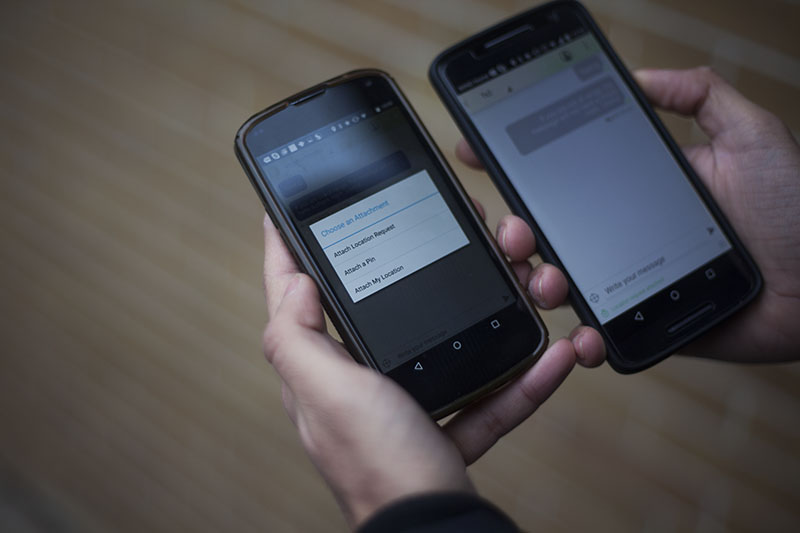
Sending location requests is very cool and actually something I would like to see implemented on all messaging service. It’s very slick, and I was floored by how perfect the deployment was.
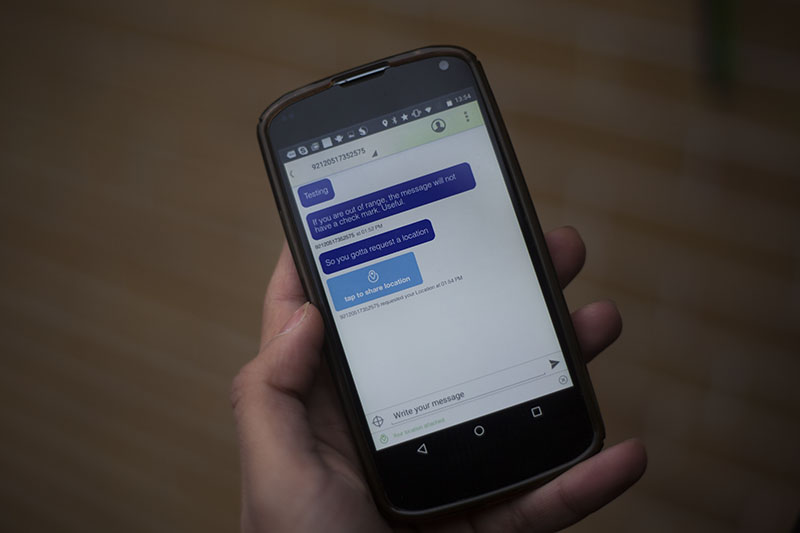
Street names blurred out for obvious reasons, but I just wanted to show the GPS location feature. In practice – it’s sublime. In my opinion, WhatsApp should take note and introduce such a nifty feature pronto! So convenient in case your friends get lost and can’t seem to find the restaurant you’ve ventured into. I love it and I see myself using it often. Instead of giving long, tedious directions or mixing up while reciting them, I can just send you my location using one click and bam, you get a map to follow. It’s pretty perfect.
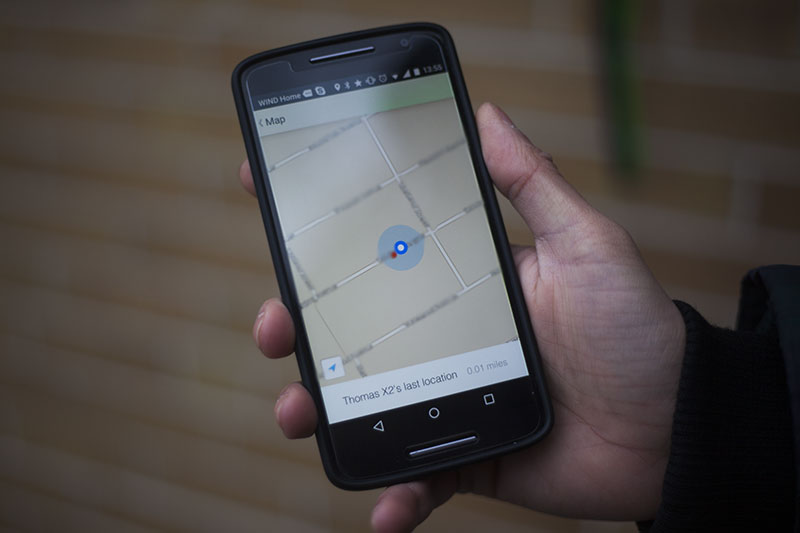
As a side note, goTenna does offer full map downloads (they are sizable) of pretty much everywhere, and thus you are not dependent on the grid even for things like downloading maps. A nice afterthought, and again a perfect feature for preppers and survivalists who may be interested.
Not much to complain about overall. I’m overwhelmingly happy with this product; one of the best small startup products I’ve come across yet.
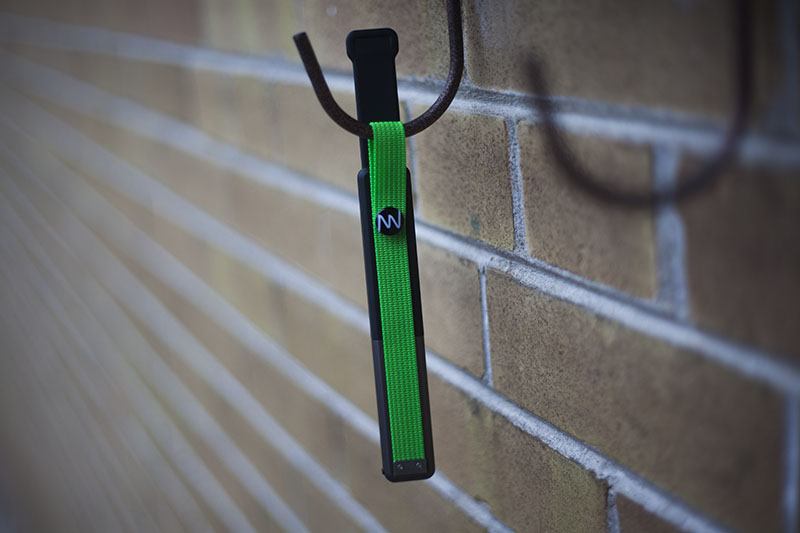
In a lot of ways, the goTenna is still too far ahead of its time. My biggest problem with the goTenna has absolutely nothing to do with any failures to deliver, but rather its lack of ubiquity.
Think about it: How awesome would it be if everyone had one of these things? The platform is solid and because it’s app based, it can be updated to provide new features in the future! Maybe we will have voice eventually, too! Video? An intranet? Who knows.
Imagine going hiking by yourself and twisting your ankle, turning to your phone and realizing that there’s no signal, but then connecting your goTenna and finding that there are a number of other goTenna users in your particular location who you can easily reach out to to ask for help. I’m not saying it was a good idea to put yourself in a situation where you might need help and couldn’t get it to begin with, but this device opens up more possibilities to reach out if/when you need to, and this possibility to reach out increases the more this device is adopted. The more ubiquitous the goTenna is, the more chance you have to use it as that potentially life-saving device. The world would be a safer place.
Worried about phone networks, governments, or any other entity spying on your conversations and storing your personal data? Concerned about security and privacy and how that would be possible and easily accessible and implementable for the public in the future? The goTenna offers a completely viable technological solution to these social issues as well.
Viva la revolución, I’m a convert.
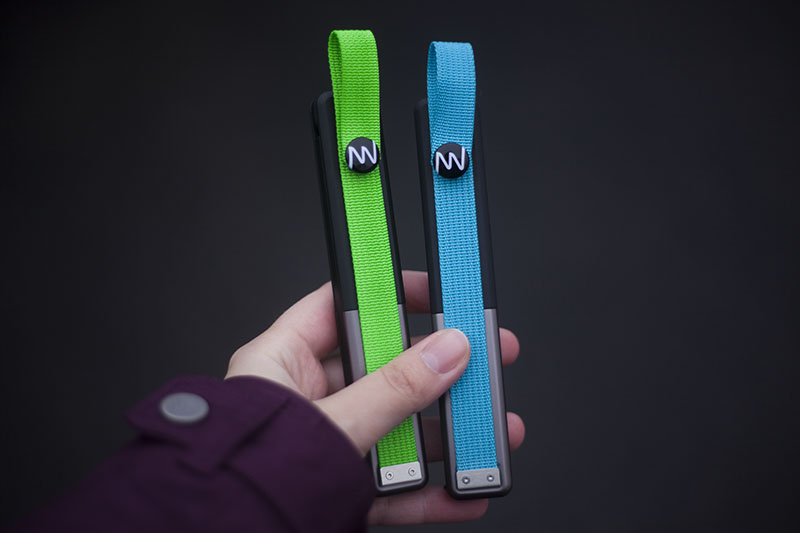
Sadly, I do doubt this tool will ever reach ubiquity. I think its adopters will primarily be hikers, people in disaster-prone environments, survivalists, preppers, and outdoorsmen. It’s a damn shame, as I feel citizen owned and deployed communication is a very powerful tool that would be amazing to have as a mainstream option, not merely a device to serve limited uses in hard times of no signal. In terms of privacy and freedom, this is quite honestly a great solution.
But at least as it stands, without ubiquity, it’s still such a useful tool anyway.
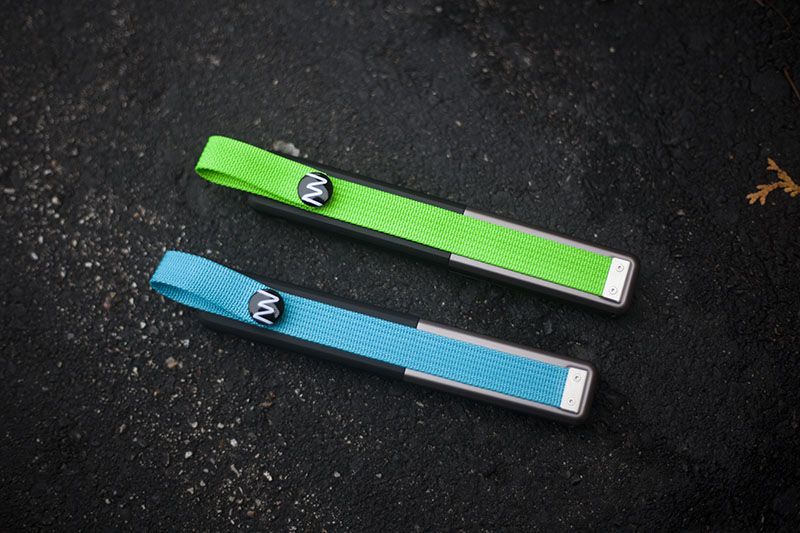
Like most kids, when I was young I had a pair of walkie-talkies I used to play with for hours upon hours with friends; Thomas the Tank Engine ones in my case. I do believe that most kids grow up fascinated with the idea of walkie-talkies: the ability to talk to another person or a group of people without needing to be connected to something. While cellphones have gotten our connection to each other to be wireless, devices like the goTenna are taking this a step up by helping us become able to converse without needing to be connected to the grid at all. A solar battery charger, an electricity power bank, your goTenna and your smartphone and you’re good to go in terms of communication for literally indefinite periods of time. No more need to rely on any phone networks to stay online – you can be fully off-grid in terms of communications. And that’s freeing.
The goTenna is a solution to a problem we scarcely think about until its too late (unless we’re preppers, of course!). What happens if another Katrina hits? What if there’s a huge power outage and the grid goes down? How will we be able to reach our family and friends, or even just simply reach out for help, in case of an emergency; especially if we’ve only got our cellphones on us?
The goTenna is the perfect solution.
The potential is literally limitless, and the more I think about it the more I feel I would lose something without this in my arsenal. It’s a device you end up feeling you need in your life, even when you originally viewed the goTenna as a curiosity.
Have just purchased and set up a set of goTennas but am unsatisfied with the offline maps provided by goTenna. What I need are satellite imagery maps to navigate with with another field technician in order to track radio-collared wildlife. The maps provided don’t appear to supply me with the topographical or vegetation information that we need such as would be visible with google earth for example. Any help would be appreciated.
I would suggest using gotenna for communication and backcountry navigator on your smartphone.
Separate topic check out beartooth as well. . I ordered some but they dont ship until December
Practical writing , I learned a lot from the details – Does anyone know if my assistant would be able to locate a template NYC DoE Extended Use App form to use ?
Hi Barton, my colleague obtained a fillable NYC DoE Extended Use App example at this site https://goo.gl/eMDWqr.
Anyone compared these to Beartooth?? http://www.beartooth.com? Just curious.
I hope someone can chime in with some answers- personally I have never used the Beartooth (or seen it!).
All that and you never mention range, beyond the manufacturer’s claims.
How far does it reach in the real world. I realize that for 4+ miles you’ll probably need to be on opposite sides of a valley with open space between and below you. But, can you get 1 mile in an urban environment? Can you get 1 mile in flat wooded terrain?
How far away could you get with your “scientific” mailbox test?
151MHz under 2watts tx probably not great.
Living in Toronto with the sort of variables I get would generate odd results. Toronto is like a bunch of villages stuck together into one big city. I have creeks and parks & mega malls within walking distance. Concrete blocks & large structures will impact range adversely and results based on my location at the time of this review would spit out different metrics depending on which direction.
I would view it as a high tech walkie-talkie with solid performance over a mile but beyond that it will depend greatly on what is separating the devices.
I am in the UK now and when I hop to the Lake District or New Forest (in right next to me) I will test them further with a more predictable terrain. All the metrics I gathered myself in Toronto were pretty useless. If I had the mall between me and the other device then the signal strength was affected drastically. In a residential district with just bungalows it seems to be ok. Distance was the same however, hence the dilemma in publishing “figures”.
At the end of the day, I don’t want to scribble something down that people can’t replicate- it would end up being nothing more than a subjective opinion that won’t be useful for the person on the other end of the screen.
I do wish goTenna would publish real world tests with varying terrain- would answer a lot of questions!
I hope my response makes sense and thanks for dropping by!
If they had an auto repeat feature that you could turn off and on, they would take off like wildfire in Africa an South America. Places where cell service is spotty at best. Your encrypted message could jump multiple devices automatically to reach the one device that could decrypt it.
Thats an awesome idea, would definitely increase its versatility. I hope goTenna takes that under advisement.
Any one have any experience on cruise ships with these? I like the idea. The more uses the better. So was just wondering how well they would work.
No experience unfortunately, I presume it would work just fine though.
Better yet, imagine if this company was bought up by someone, say Samsung, LG, or Google, and then integrated into smartphones. What if every smartphone had this technology built in and could work off the grid with every other phone within 2-5 miles.
As it was previously commented this product (radio system) is allowed to work only in the U.S. and probably the size of the antenna can’t be much smaller. Otherwise the Ericsson made some peer-to-peer cellphone network experiments in rural Africa a few years ago (I just remember a short article about the start of it but not about the results).
Wouldn’t that be something? Fingers crossed. Any independence from the grid is a good thing as far as I am concerned.
seems like quite a few positive experiences posted here. So here’s the flip side. I can honestly say we found them practically useless. Range in the outdoors with some hills is less than half of what you get from a $25 GMRS FRS walkie talkie. One mile at best in the woods line of sight. The goTenna’s also do not auto resend the messages so if you really need to send a message you have to keep walking around and hitting the resend button. Location also has to be requested or sent so if someone in your party gets hurt and can’t respond or send….. oh well. Lastly there are no topomaps for download so the location function is useless in roadless areas. My suggestion is spend wisely buy something like a Garmin Rhino GPS and you can talk/text and see the locations of your party at all times they are waterproof and you don’t need a phone. If you want to spend $200 sit in the woods and text within yelling distance by all means by a goTenna.
Thanks for this Nathan. I was on the verge of getting these for a mate and I when we travel abroad soon.
Did you send any of this off to goTenna? Did they have any advice on your feedback?
They say the stated range is 1-4 miles in forested areas. Best case is 1 mile in my testing. No plans in the works for auto resending of messages since it would drastically reduce battery life. Perhaps down the road the ability to utilize topo maps. My advice is if you need a reliable emergency solution then gotenna is not the way to go. They do seem to market the gotenna to the prepper community however. For your application of a general use overseas communication device to avoid high data phone costs then it should work fine as long as you are close enough. Survivaltech Nord has a myth busting youtube video on gotenna’s that is pretty accurate and fair.
Thanks Nathan, I really appreciate this feedback. I’ll check this video out.
Happy Australia Day for tomorrow (don’t worry…we wish it to everyone :D)
Thats a pretty damning review Nathan, such a shame it didn’t work out. I always view the goTenna as more of an offgrid replacement for WhatsApp, especially for large groups on a homestead. Did you ever contact goTenna? Seems to me like there are mixed reports on range depending on environmental factors, maybe its something they need to look at.
Thanks for sharing your impressions, very valuable to have other people with experience chime in!
Hey Thomas, Nathan – its J here from goTenna, that “mythbusting” video is from over a year ago before we ever even shipped our product, so I really wouldn’t put much stock in that considering the person was making a pretty strong opinion based off of something he never tried himself. You can check out a ton of other reviews that are from people who actually tried the product, like for example this one from last week! https://www.youtube.com/watch?v=dw3BWFnaVno
@nathan – for the range you’re seeing that really doesn’t seem right to us, we have a whole range of radios in-house here that we have tested extensively in head-to-heads against our product. We have FRS, GMRS, MURS, and even a few of the mad expensive Garmin Rino products. In almost every single test (although obviously not 100%), we have blown all of those products out of the water in field performance. So perhaps you might be having a bit of user error? If you start a support ticket with us we’d be happy to help. The first thing that comes to mind is that maybe you’re holding the goTenna in your hand, or wearing having it inside a pants pocket which is against the indicated usage instructions communicated during goTenna’s on-boarding instructions. Just holding it in your hand will cut its range by over 50% its a common mistake that perhaps we need to do a better job of communicating clearly to users, which could totally be our fault! There could be other things perhaps in place, and we would be happy to discuss with you if you’re seeing disappointing field performance, just shoot us a note!
Nathan,
Actually, Gotenna does have delivery confirmation as well as a retry option when sending a one to one text message that has not gone through. The other function that I found quite helpful is that they offer a “Shout” feature that will send out a message to any other goTenna in range in an emergency. Personally, I have received messages from up to 4 miles away and that was also in the woods. Did you have the device clipped to your backpack? I have read of people having range issues while holding the antenna but not when its clipped on. Hope this helps with some of your concerns.
Is it water resistant? my luck id drop it in water!,
Water resistent? Yes. Waterproof? No. I think it would survive a dip but I wouldn’t go swimming with one.
Thanks for dropping by Lorraine!
I have tried to find the iPhone App without success.
Please send me a link to the APP
mfontana1@cfl.rr.com
I pre-ordered and then cancelled when they announced a significant reduction in range. I’m now curious… what are your experiences with the gotenna in an urban setting (city, inside a mall, etc.) How’s the range?
Range is superior to that of a walkie-talkie so I was impressed- you can always find high ground to launch a message- thats the advantage of a text based system- you don’t need a continuous sync!
Interesting idea, for me it seems as the more familiar and easier-to-use walkie-talkie/PMR of the (touchscreen) smartphone generation which can be good if you don’t want to learn how to use a radio just use your smartphone and really need the advanced features in a small group.
But in emergency situations I think it is far far away from the number of the already existing, world wide used civilian and non-civilian owned radios (including the possibility of the data communication), accessories, compatibility and the huge experience, proven emergency communication protocols behind it. Plus as it is a more complex system depends on multiple things to work together it has a higher chance of failure (e.g. the antenna, the device’s bluetooth, the smartphone’s bluetooth, the device’s battery, the smartphone’s battery, the app, the OS, etc.). It’s current price will not make it widely adapted soon which is seriously limits it’s usefulness in this situations. If it will be cheaper and somehow connects to the existing radios then it can be more interesting and successful.
Some good points in here Kobaljov. I’m kinda new to the idea of communication without mobile/cellular networks. Are there brands or devices you’d recommend? Maybe Thomas and Elise could review them here?
Unfortunately I’m not a expert in this topic too plus I’m in Hungary, EU and the regulations (e.g. output performance limitation, available frequencies, etc.) can be different in the other countries which can affect the range of the available brands/devices too. As a start you can check the global web infos about the PMRs too, e.g.:
https://en.wikipedia.org/wiki/Personal_radio_service
Then try to find a local radio group or maybe preppers and probably they can give you the local information and hints.
Thanks mate. Merry Christmas.
I agree with all those points, but I do think these distributed grid communication devices have their place & I do wish the price point was lower (or that the platform was open source) so that adoption would be accelerated.
Excellent review and thank you, Thomas. Side note…try Glympse for that app “in case your friends get lost and can’t seem to find the restaurant”. It’s very useful indeed.
Good to know, thanks for sharing & dropping by Dex!
This does appear to be a useful tool. Seems like there is more potential there than meets the eye, too. I don’t have a smart phone but I’m thinking about getting one now. Do you suppose there’s any way these can be used with ‘dumb phones’ ? Would just a simple adapter plug-in make this work on ‘dumb phones’ which have texting capabilities?
I wonder, can a person buy a smart phone without a service contract and just use the goTenna? …Professional frugalers and frugalistas might wanna know.
Leonor Garcia and Thomas would be able to answer this one better I imagine but after looking online a bit more at it last night, it would appear to be App dependent, meaning it won’t really work without the smartphones ability to run the app. There are devices that you can get to pin point GPS co-ordinates and also devices like simple walkie-talkies, but it would seem that the goTenna has done some work in combining off grid texting, GPS Locating in association with the map based programs in your phone.
You can pick up some really good budget smart phones these days. OnePlus is such a company and pretty sure LG or Motorola just rolled out a budget smartphone that’s less than 250usd.
You can use goTenna with smartphones that don’t have a contract.
It 100% requires a smartphone (Android or iPhone) but as DW mentioned, it doesn’t need to have a contract. I am sure if you ask goTenna they can suggest an inexpensive $50-100 device that will work with it without requiring a plan.
It works on Elise’s Moto E and thats an entry level smartphone so I imagine there are alternatives that could be even cheaper!
yes you can do this.
I was watching an episode of Person of Interest a while back where a tech guy sets up a local phone network in New York City that spanned several miles of the island. I was thinking that with the right know how that this wouldn’t be a tough thing to do over just two phones rather than a network. While that was probably not outside the realm of plausability, this looks awesome.
A great dollar saving device over a long period of time. and if you think about it, unless you are spreadout far apart, this is a device you could easily set up to use just for texting with loved ones.
Really great product review Thomas…for a really great product no less. Thanks mate.
I really dig it, it honestly is pretty seamless (just likes WhatsApp) & the location tool is awesome- especially since I am terrible at giving (and receiving) directions!
I think this is a very professional and accurate review and I agree with you totally!! The goTenna has been working for us just great and we have used it traveling abroad and works like a charm….
Hi Leonor,
This was something I was curious about. There are no limitations on the app dependent on the country you were in?
Hi,
I have used it in Central America and it worked, have some friends that used it in Spain and it worked for them too, so I imagine it will work pretty much anywhere.
Cheers mate. Merry Christmas.
Thanks for the feedback Leonor, glad you had positive experiences too!